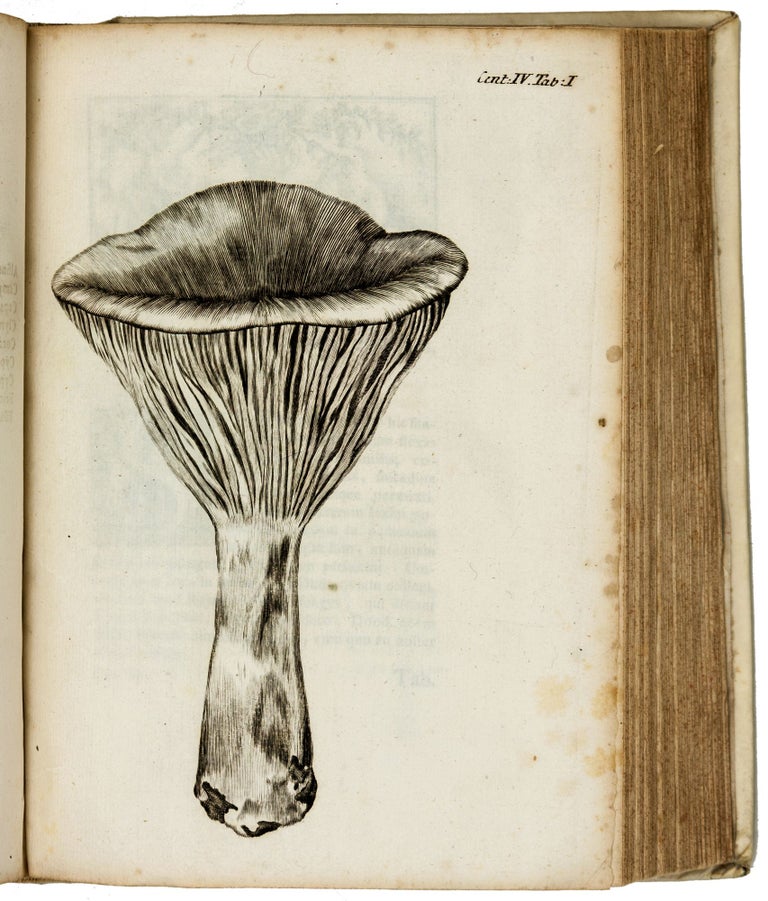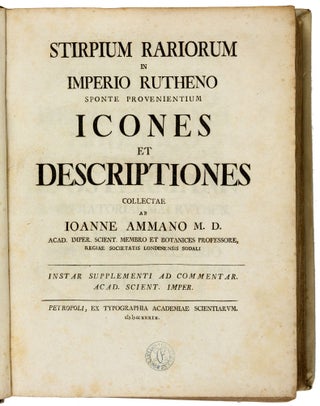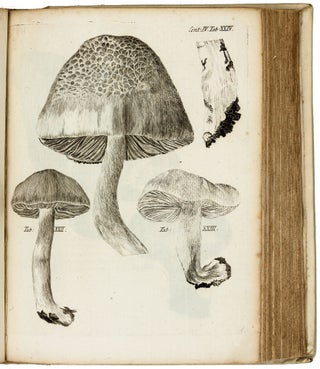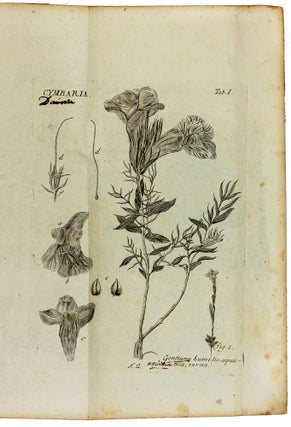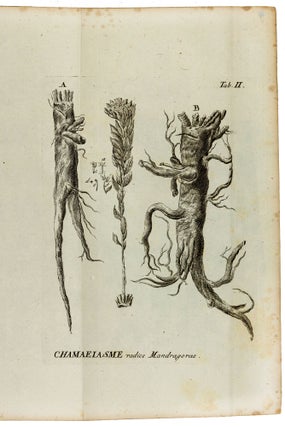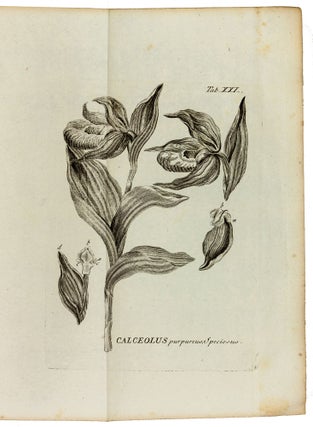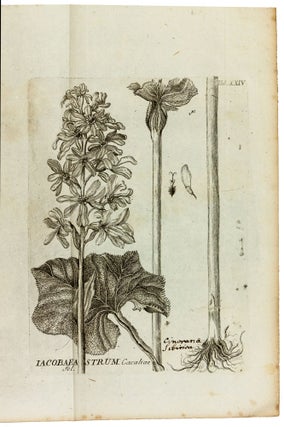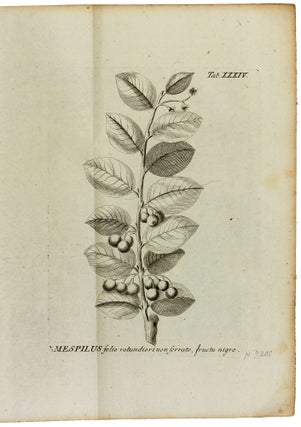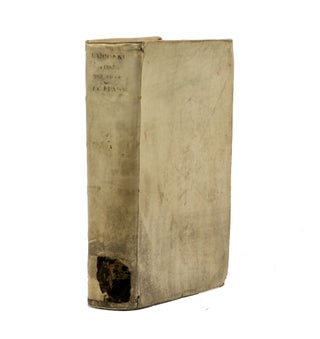Stirpium rariorum in Imperio Rutheno sponte provenientium icones et descriptiones.
Large 4to. [26 x 20.5 cm], (6) ff., including one engraved vignette showing a garden scene, 210 pp., 1 blank, (7) ff. [the last an erratum], 35 consecutively numbered plates; note: plates xiv and xvi on a single folding leaf.
[Bound with:]
BUXBAUM, Johann Christian. Plantarum minus Cognitarum Centuria IV-V [including Appendix] complectens Plantas circa Byzantium & in Oriente Observatas. St. Petersburg, Typographia Academiae, 1733-40. Two (of five) volumes. (2) ff., 40 pp., 39 plates; (2) ff., 48 pp., 65 plates (in part V & appendix). Bound in contemporary vellum over boards, title inked on spine with trace of armorial shelf mark. Danish library stamp on title. Light marginal foxing throughout, minor worming on a few corners of Amman. Amman plates carefully labeled in ink with alternative, Linnaean plant names. Generally a wide-margined copy, (very) good.
Two important and generously illustrated botanical works produced by respected Linnaean correspondents at the Imperial Academy of Sciences at St. Petersburg. Amman’s Stirpium rariorum contains useful descriptions of 285 plants from Eastern Europe and “Ruthenia” (now Ukraine), enhanced with 35 clear engravings. According to Hunt, Amman “made a notable contribution to Russian taxonomy under Peter the Great and his immediate successors; and was thus a precursor of Gmelin and Pallas” (Hunt 511). The plates are unsigned throughout, although a small engraving on the dedicatory leaf of Amman’s work is signed by P[hilipp] G[Georg] Mattarnovy (/Filip Jegorovitch, 1716-1742), a Swiss-Italian artist drawn to the St. Petersburg Academy. The engravings are here labeled in ink with alternative Latinate names, suggesting that an early reader attempted to apply Linnaeus’ new system to these species.
Buxbaum’s Centuria I-V is one of the first publications to describe and illustrate such a substantial portion of the vegetation of eastern Europe and Asia Minor. In addition to constituting one of the first scientific works on the flora of Estonia, the Centuria also offers the first descriptions of plants along the coast of the Black Sea, Armenia, and Greece. Buxbaum accomplished much of his research while accompanying the imperial chancellor Count Romanzoff to Constantinople. The work would ultimately consist of five parts, which were issued separately between 1728-1740 (the entire set received two editions). The final two volumes of the Centuria were published posthumously by Johann Gmelin, which may account for their separate appearance here.
The Swiss Amman (1707-1741), who studied under Herman Boerhaave at Leyden, was Curator of Hans Sloane’s natural history collection in London. In 1733 he was summoned to Russia to become a professor of botany at the Imperial Academy of Sciences at St. Petersburg. Buxbaum (1693-1730) was also a professor of botany in St. Petersburg, one of many Germans who made important contributions to the Imperial Academy. Both men corresponded with Linnaeus, even sending rare Russian specimens and seedlings to Sweden.
* 1)Nissen, BBI 24, see p. 223-4; Hunt 511; Pritzel 136; Stafleu 114; Graesse I.101.
Sold

